The Bay Trail Preview: Intel Atom Z3770 Tested
by Anand Lal Shimpi & Brian Klug on September 11, 2013 12:00 PM ESTIn addition to showing Bay Trail running on a Windows 8.x platform, Intel showed us a “pre-beta” version of the platform running Android 4.2.2. I have to emphasize that the build they showed us definitely seemed pre-beta, as there was some instability, but overall the build was good enough to run some tests on and get a feel for. Intel made it clear that they do have a lot more work to do on their Android build before it’s considered close to final quality than the Windows equivalent.
Inside Android we can still see the CPU state table data and how long the cores are sitting in each performance state still, despite this now being managed in-silicon on Bay Trail. In addition Android sees the 2.39 GHz Z3770 boost frequency and reports it. I didn’t see any strange behavior on the device while running tests and watching CPU frequency, if anything the reference design platform stayed at the maximum boost frequency even with four cores plugged in for an impressive amount of time. Of course this is a tablet so there’s more TDP to play around with compared to a phone.
Depending on where you were in the Android UI, there was some definite stutter, but I’m told this is a result of an issue with Dalvik not allocating threads to cores properly that Intel is still tuning, something which you can see plays itself out as well in the AndEBench Java test that runs in Dalvik. The launcher especially had some stutter, but Intel claimed they were aware of it and that final performance in areas like that would be dramatically improved. Regardless of the state of Bay Trail’s Android port, it affords us the opportunity to look at performance through our pretty standard benchmark suite.
On the CPU side for Android we’re still limited to just a few tests that rely on a combination of native code and stuff that runs inside the browser. That means AndEBench, JavaScript benchmarks, and part of Vellamo.
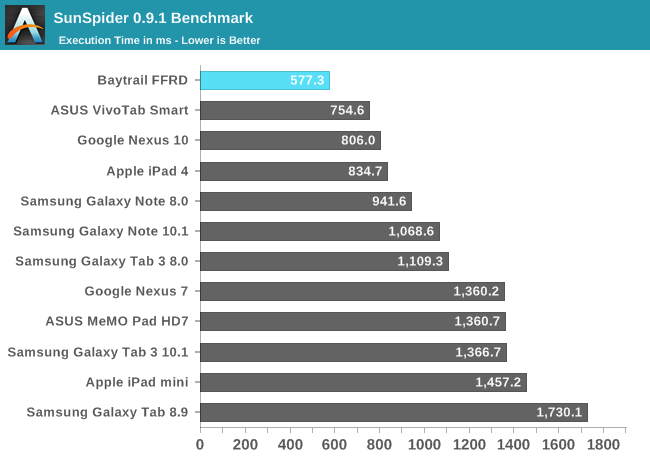
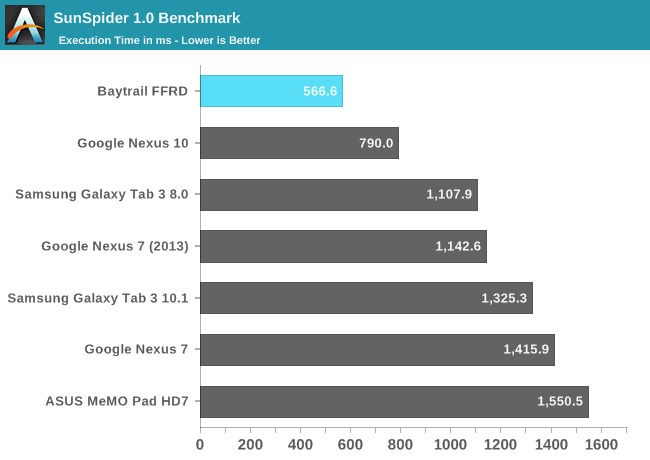
Sunspider has been a regular staple but in recent time has become an exercise in browser JavaScript engine optimization rather than actual performance. Nevertheless the FFRD takes the crown in both 1.0 and 0.9.1 (we have more tablet data from the 0.9.1 version so I replicated it here).
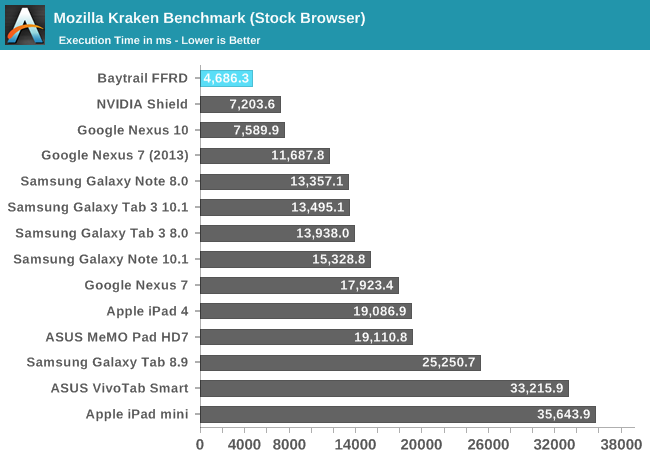
Kraken is another JavaScript benchmark which hasn’t quite been an optimization target everyone has gone after lately, and it’s also longer, which makes it a bit more reliable. Once again Bay Trail takes the crown here with notably faster JS engine performance.
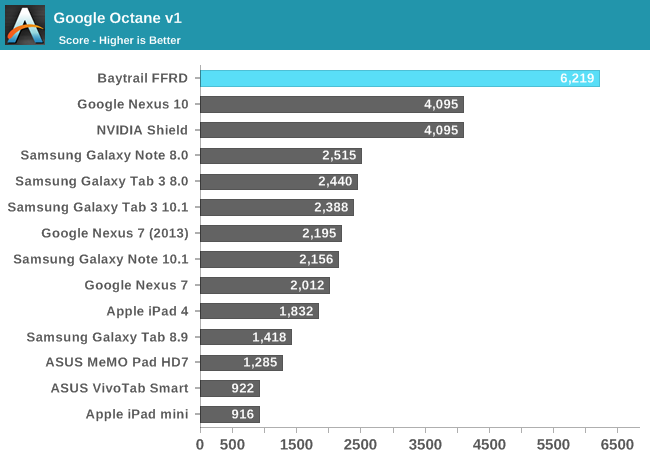
Google Octane is another JS test that isn’t quite as platform optimized yet, here there’s once again dominance by Bay Trail with just over a 50 percent higher score.
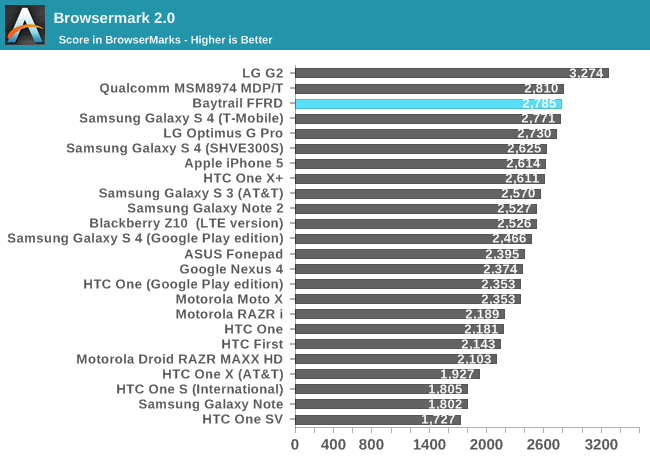
Browsermark has a combination of both JS tests and other web related performance metrics. Here the Bay Trail platform lags behind the 8974 based devices slightly. This isn’t a raw JavaScript benchmark again but rather a more holistic web browsing performance test, so it’s interesting to see Bay Trail a bit behind here.
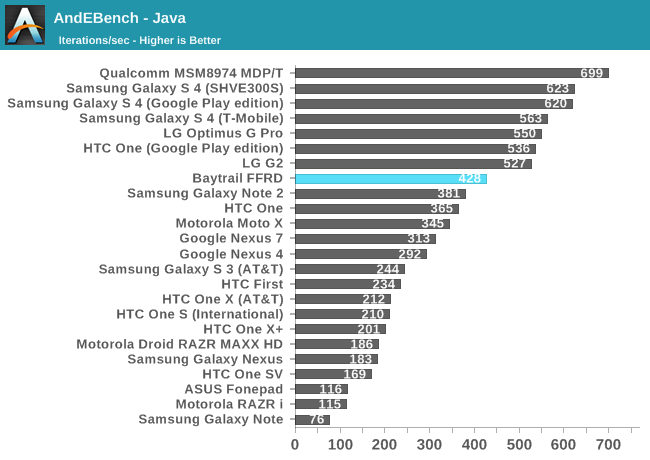

AndEBench is a combination native compiled microkernel benchmark (indicative of NDK application performance) that also runs a very similar workload atop Dalvik like a normal Android Java application. Here we can see what Intel was talking about when they said they have more work to do getting Dalvik working properly at dispatching threads to appropriate cores, hopefully the Java number will climb considerably. The native test also shows a lead over the competition.
GPU Performance
While Bay Trail clearly leads on the CPU side, its GPU performance is more middle of the road - at least among the higher end SoCs. In 3DMark Bay Trail's GPU performance is aided by the more CPU bound nature of the benchmark, but here Intel is able to beat the Snapdragon 600. Snapdragon 800 on the other hand pulls ahead by around 35%.
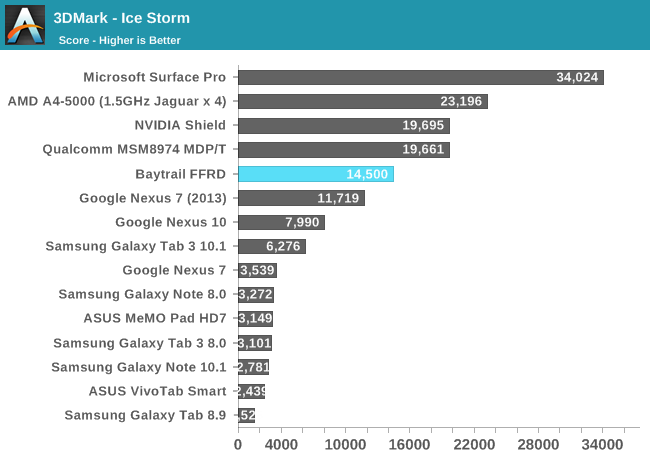
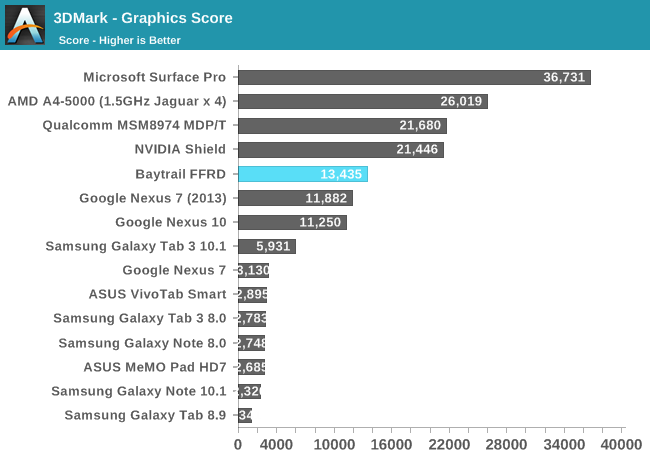
The 3DMark Physics test is effectively a CPU test, which once again plays to Bay Trail's strengths. Here it's faster than Snapdragon 800 and Cortex A15. Only Ivy Bridge is quicker in a tablet.
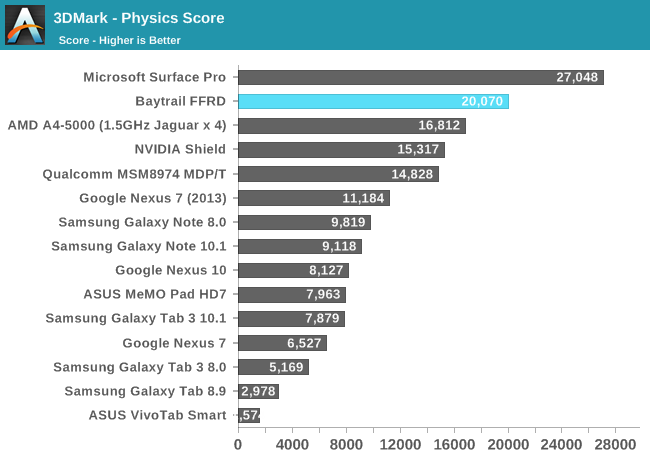
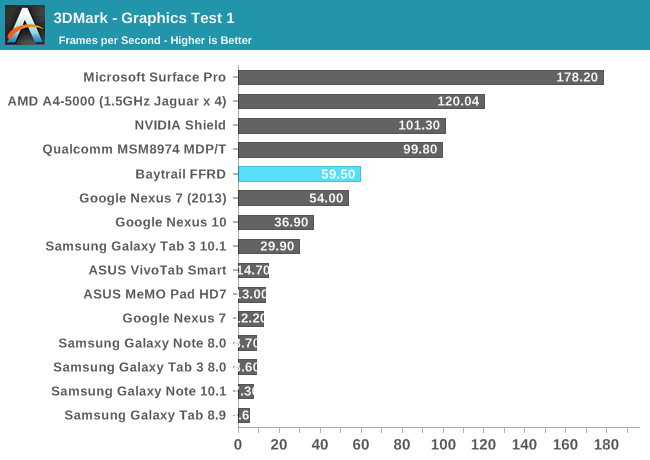
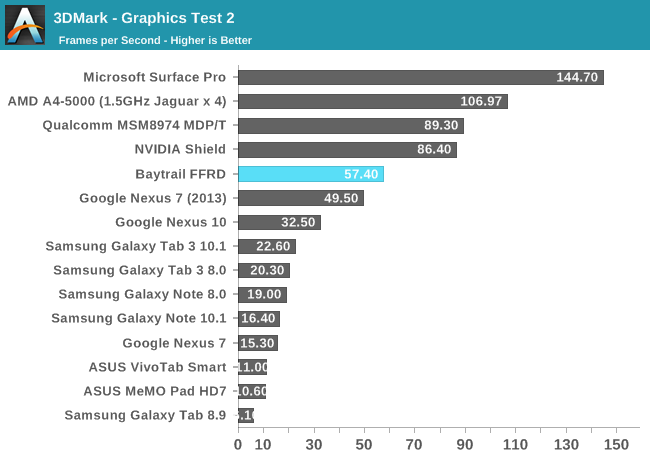
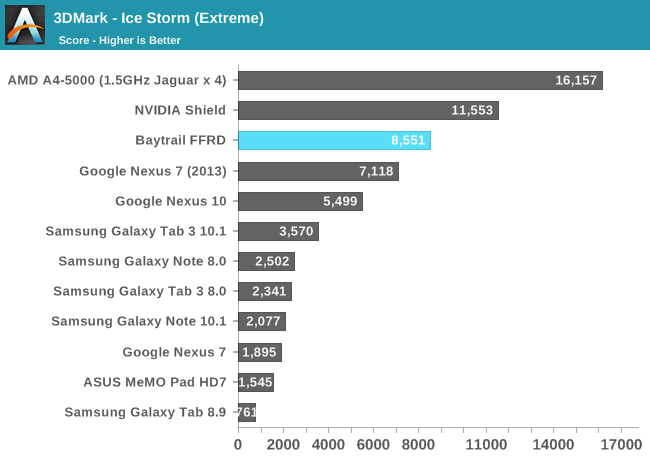
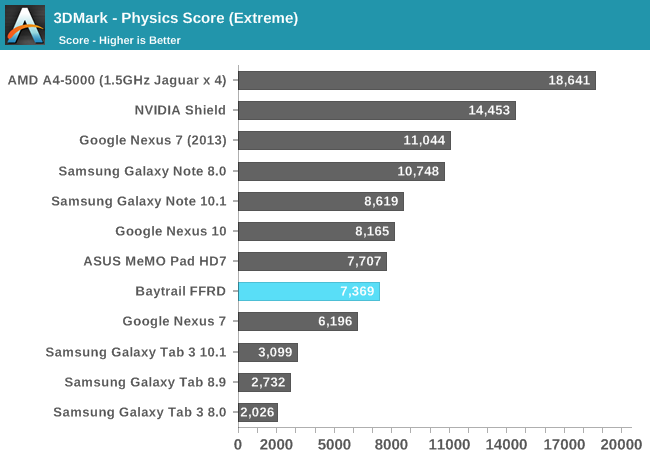
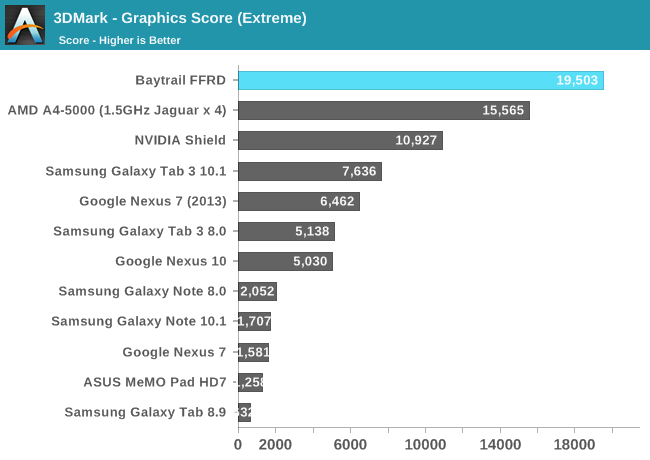
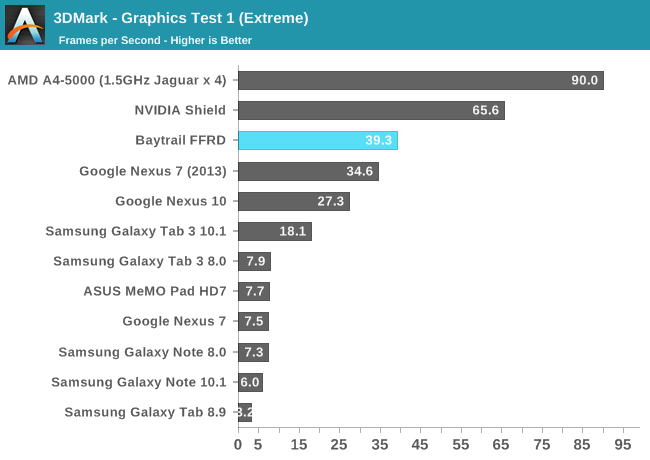
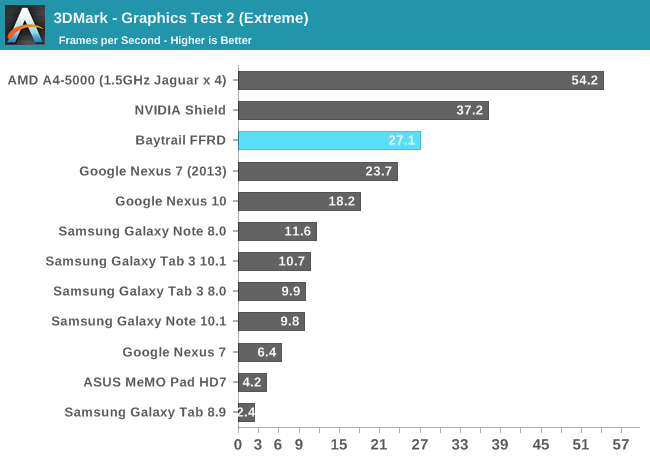
Basemark X
Basemark X is a bit more GPU bound than 3DMark, and we also have iOS data here so we can put Bay Trail's performance in better perspective. Here Bay Trail is a bit slower than the iPad 4, and clearly Tegra 4 and Snapdragon 800. Intel's GPU in Android is measurably quicker than Adreno 320/S600 though.
Bay Trail's onscreen performance is penalized by the FFRD's extremely high native resolution.

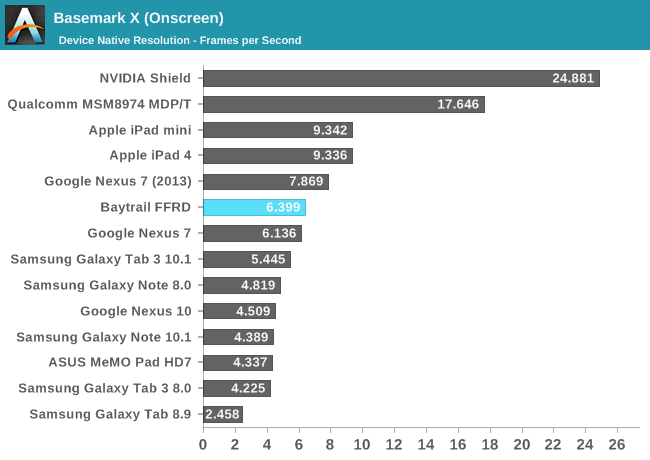
GLBenchmark 2.7
The more interested GLBenchmark numbers, T-Rex HD, show Bay Trail just behind the iPad 4 in performance. It's definitely not bad at all but clearly not industry leading.
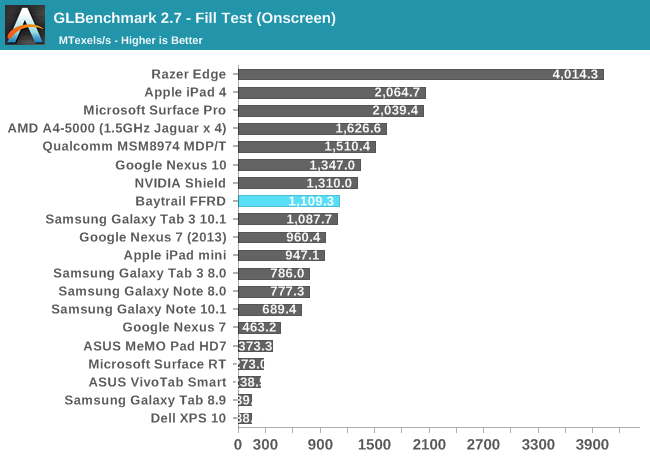
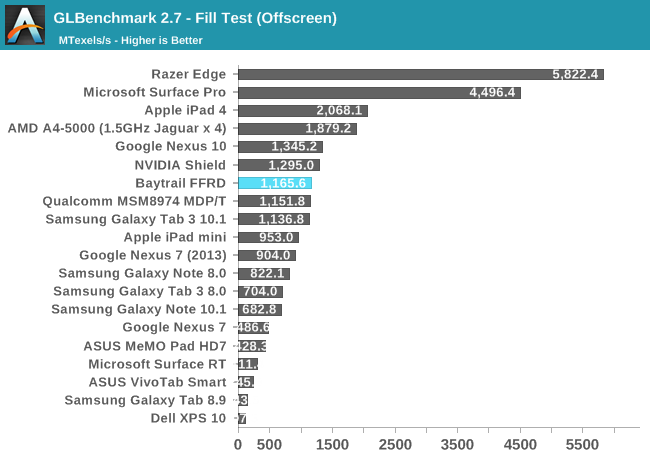
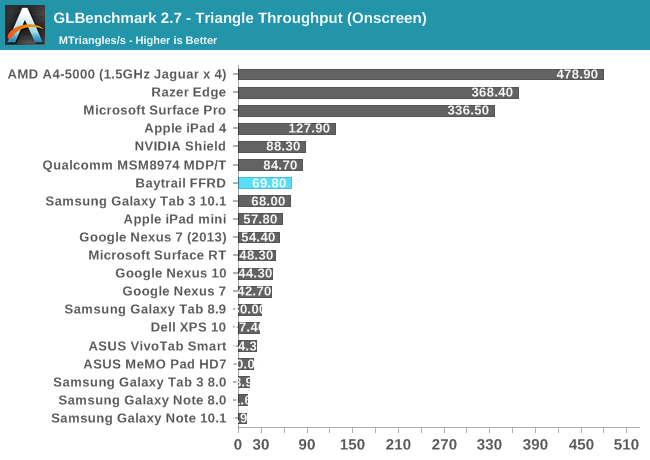
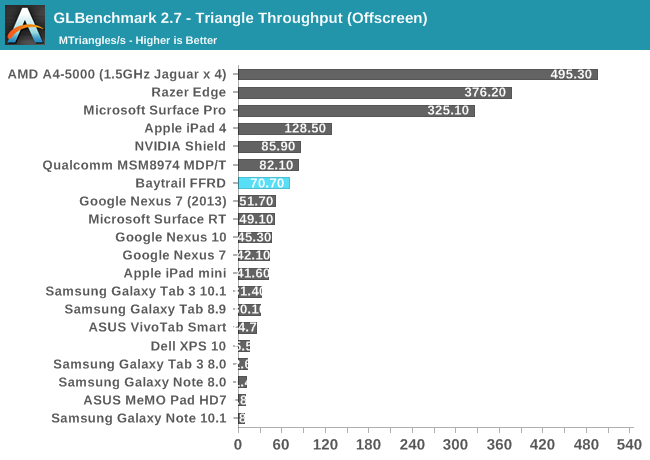
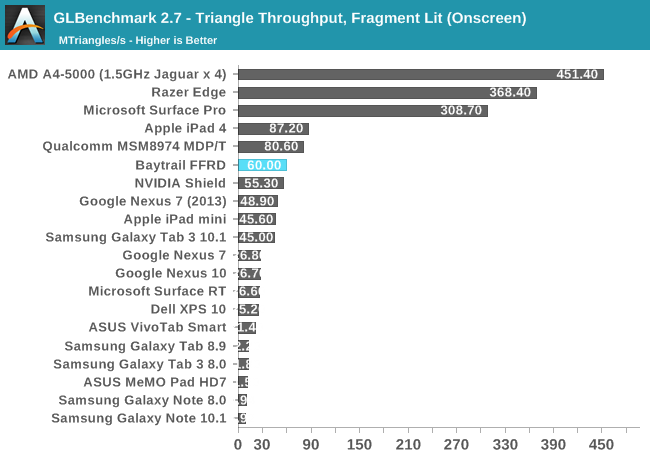
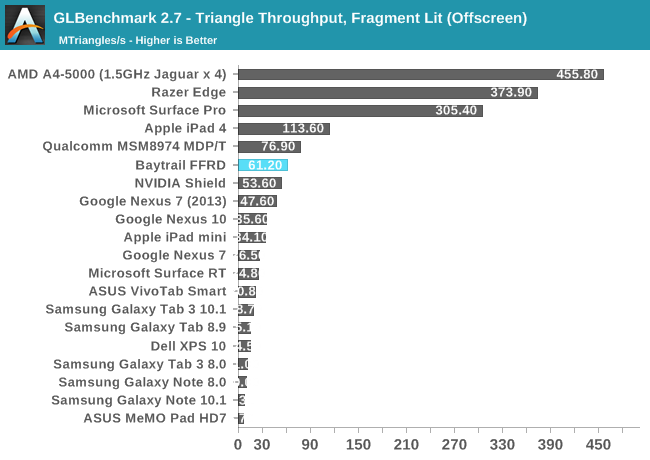
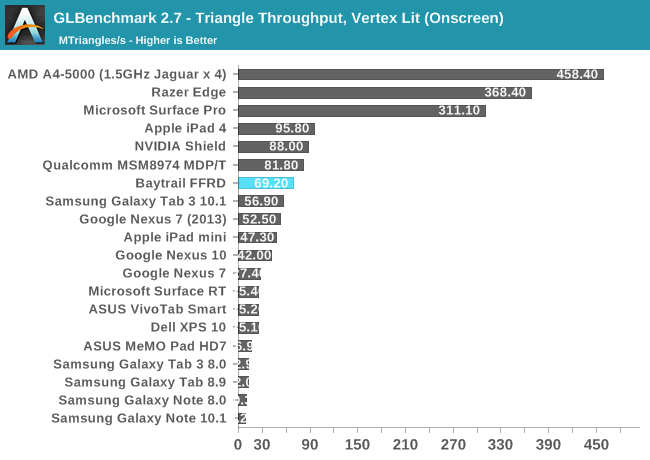
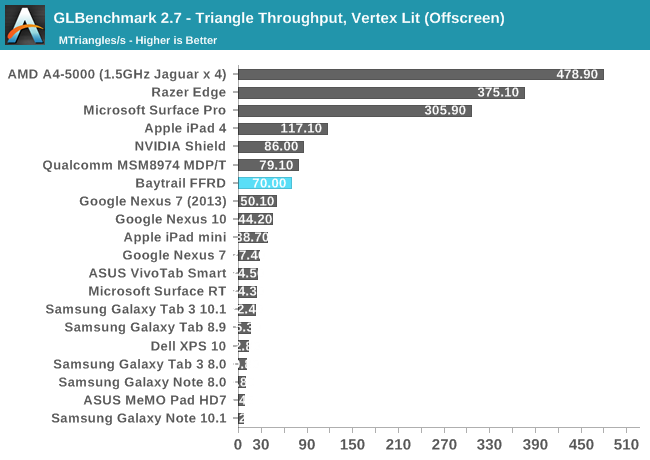
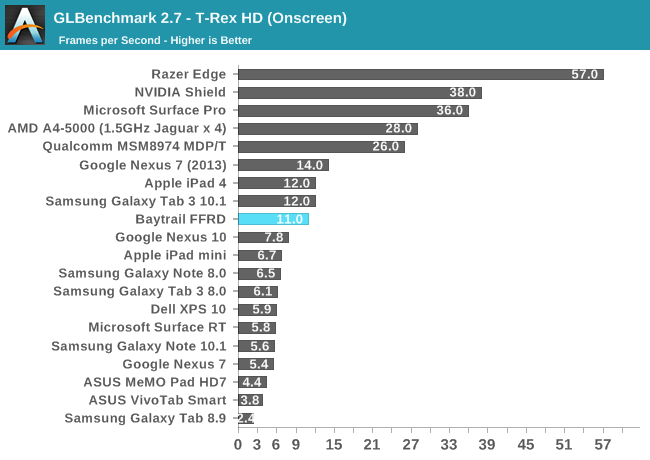
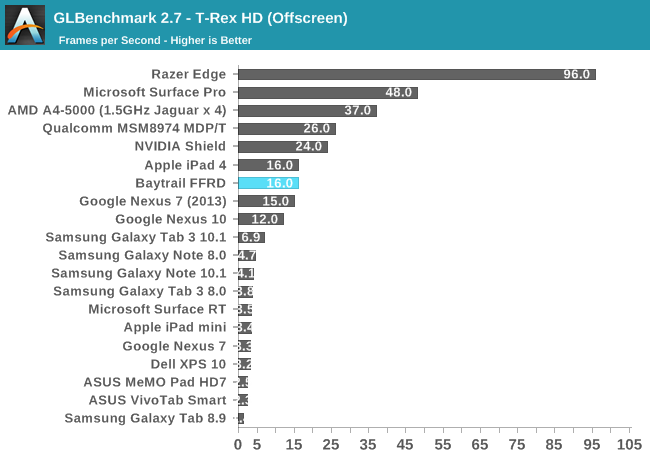
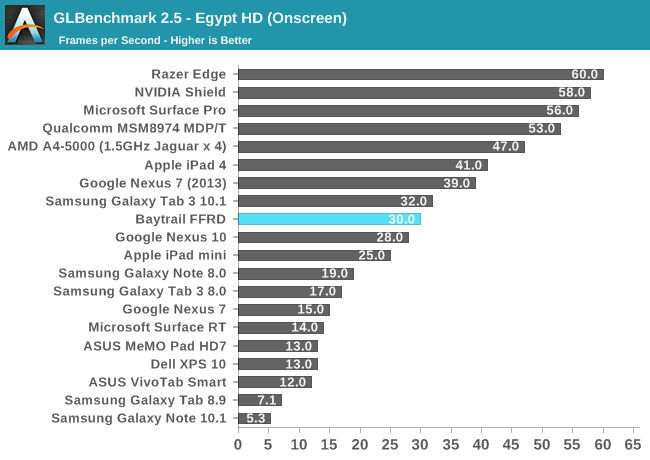
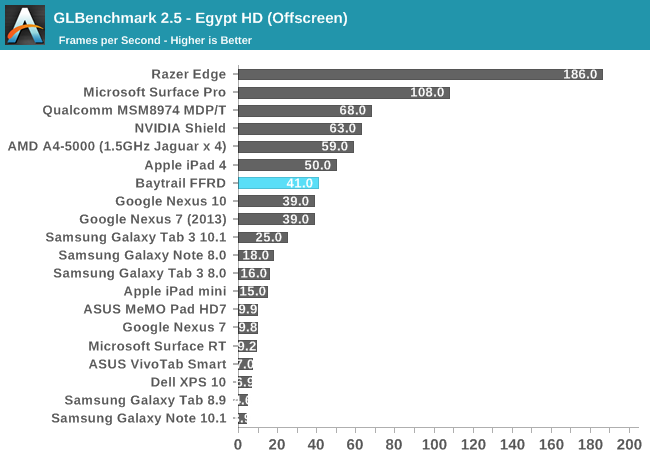
















190 Comments
View All Comments
vishal_ec - Friday, September 13, 2013 - link
what do you mean by "The memory interface is fairly ridiculous by mobile standards."MacrosTheBlack - Saturday, September 14, 2013 - link
While not a graphics powerhouse, do you think games like Warcraft 3, Age of Empires 2 HD, and many of the games on gog.com will run okay on Bay Trail?Muyoso - Sunday, October 6, 2013 - link
This is my biggest question. Can't wait to see how something like the Asus T100 will handle some older and indie games.Integr8d - Sunday, September 15, 2013 - link
Anand/Brian, any thoughts on how this might alter the NAS landscape, properly implemented?fteoath64 - Monday, September 16, 2013 - link
I was wondering similarly. But nah. No integrated SATA controllersl. Even AMD does not seem interested in the NAS market. To make a low-end to mid-end x86 for NAS would need good tweaking for dual channel RAM, integrated SATA (4 or 6 ports), integrated USB3 and lock standard 64MB Vga frame buffer. It should be low cost and flexible enough but Marvell is catching up to the aging Atom solutions which are no longer lower power ....Tangey - Monday, September 16, 2013 - link
the article is wrong when stating baytrail no longer using IMG video decode. Intels own datasheet shows it has IMG's VXD392 video decode block, which can decode 4K streams.(see 2nd table in the link)
http://software.intel.com/en-us/articles/4th-gener...
SanX - Tuesday, September 17, 2013 - link
I do not care if T-Rex is at 15 Hertz even less, make me 6" Windows 8 Pro phablet now, this chip has already good enough performance for that. Windows 8 Pro phablet NOW, damid!tipoo - Tuesday, September 17, 2013 - link
It would be nice to see a Core 2 in the actual review, as a suggestionsireangelus - Thursday, October 31, 2013 - link
Hey guys.. i was wondering.. what if atom is the next "core"? I mean, looking back at the P IV> centrino>core revolution, what if we are going to see a core>atom revolution where atom will catch up and surpass core performances but with much lower power consumption?AB_Competitive - Monday, April 21, 2014 - link
On your comment on Sept 2013: " Whether we’re talking about Cortex A15 in NVIDIA’s Shield or Qualcomm’s Krait 400, Silvermont is quicker. It seems safe to say that Intel will have the fastest CPU performance out of any Android tablet platform once Bay Trail ships later this year."It is April 2014, seven months later and there are no commercial Android tablets using Bay Trail....so much for a good Intel processor....